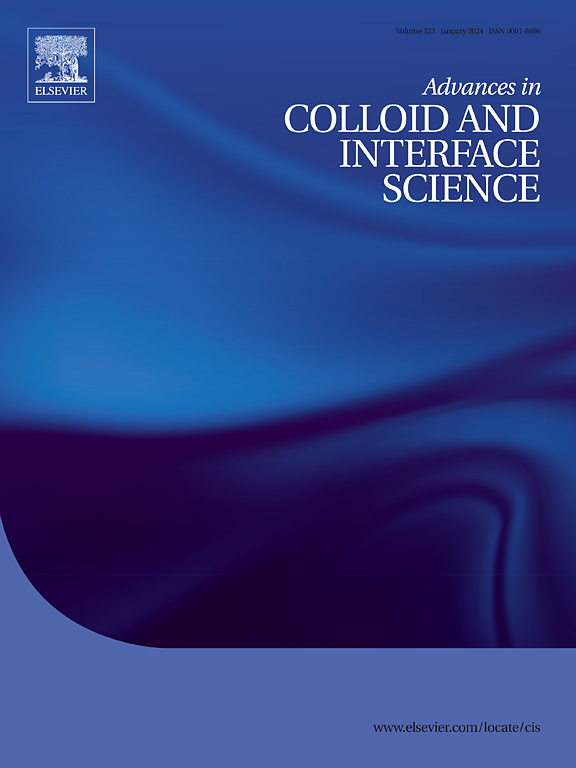Droplet evaporation on super liquid-repellent surfaces: A controllable approach for supraparticle fabrication
IF 15.9
1区 化学
Q1 CHEMISTRY, PHYSICAL
引用次数: 0
Abstract
Supraparticles are agglomerates of nano- and/or microparticles with sizes ranging from tens to hundreds of microns, making them more accessible for handling and recovery than the building blocks. Supraparticles not only inherit the properties and functions of primary particles but also exhibit characteristics such as high porosity, large specific surface area, and improved functionalities, which can be attributed to the synergism, coupling, and co-localization among the constituents. Therefore, supraparticles hold promising applications in catalysis, drug delivery, sensing, etc. Among the various synthesizing strategies, evaporating droplets on a liquid-repellent surface is proposed as an effective approach to fabricate supraparticles with unique structural features and functions. The boundary conditions of such droplet-confinement methods significantly drive the formation of supraparticles by reducing or avoiding the use of solvents or processing liquids, which further accelerates the development and utilization of supraparticles. This paper presents an overview of recent developments in the fabrication of supraparticles by evaporating droplets on liquid-repellent surfaces. The review focuses on the evaporation processes on lubricant and superhydrophobic surfaces, structural regulation, and applications of supraparticles. Finally, an outlook on the future directions of evaporation on liquid-repellent surfaces mediated supraparticle fabrication is presented.

超级憎液表面上的液滴蒸发:超微粒制造的可控方法。
超微粒子是纳米和/或微米粒子的团聚体,其大小从几十微米到几百微米不等,与构件相比,更易于处理和回收。超微粒子不仅继承了原生粒子的特性和功能,而且还表现出高孔隙率、大比表面积和更好的功能等特性,这些特性可归因于各成分之间的协同、耦合和共定位。因此,超微粒在催化、药物输送、传感等领域具有广阔的应用前景。在各种合成策略中,在憎液表面蒸发液滴被认为是制造具有独特结构特征和功能的超微粒的有效方法。通过减少或避免使用溶剂或加工液,这种液滴凝聚方法的边界条件极大地推动了超微粒的形成,从而进一步加快了超微粒的开发和利用。本文概述了通过在憎液表面蒸发液滴来制造超微粒的最新进展。综述的重点是润滑剂和超疏水表面的蒸发过程、结构调节以及超级微粒的应用。最后,展望了憎液表面蒸发介导超微粒制造的未来发展方向。
本文章由计算机程序翻译,如有差异,请以英文原文为准。
求助全文
约1分钟内获得全文
求助全文
来源期刊
CiteScore
28.50
自引率
2.60%
发文量
175
审稿时长
31 days
期刊介绍:
"Advances in Colloid and Interface Science" is an international journal that focuses on experimental and theoretical developments in interfacial and colloidal phenomena. The journal covers a wide range of disciplines including biology, chemistry, physics, and technology.
The journal accepts review articles on any topic within the scope of colloid and interface science. These articles should provide an in-depth analysis of the subject matter, offering a critical review of the current state of the field. The author's informed opinion on the topic should also be included. The manuscript should compare and contrast ideas found in the reviewed literature and address the limitations of these ideas.
Typically, the articles published in this journal are written by recognized experts in the field.

 求助内容:
求助内容: 应助结果提醒方式:
应助结果提醒方式:


